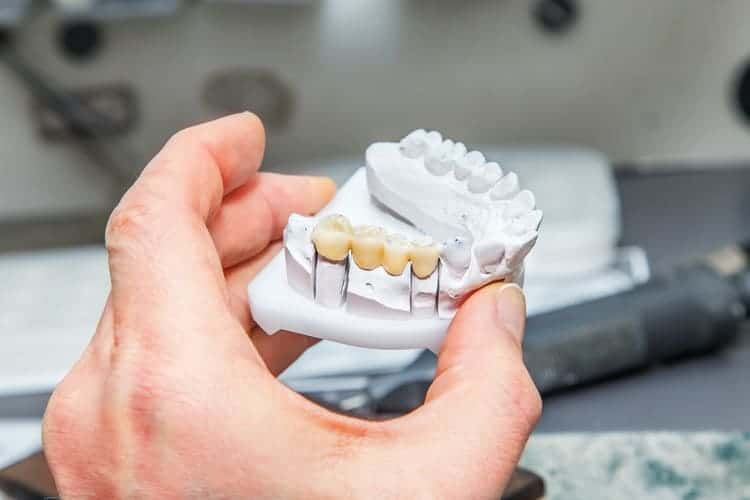Dental Bridge
While having a missing tooth or gap in your smile may make you self-conscious, it is important to know that you are not alone as many individuals between the ages of 20-65 have one or more missing teeth. The fantastic news is that you do not have to walk around with decayed or missing teeth as there are plenty of options for replacing them, one of which is a dental procedure called dental bridges.

What Is a Dental Bridge?
A dental bridge or a pontic, is a false tooth that is held in place by other teeth, whether these are natural or implanted. These teeth are called abutment teeth and are used to support or even anchor a fixed or removable prosthesis like a dental bridge. While you can get dental bridges in numerous materials, they are generally made from porcelain so that they can blend in with your natural teeth. A dental bridge is a very popular choice among dentists when you have natural teeth on both sides of a missing one.
Why Would You Need a Dental Bridge?
In most cases, a dental bridge is used to replace missing teeth or fill in gaps in a smile. A dental bridge can do the following.
- Restore your smile to its natural fullness,
- Restore your ability to chew your food,
- Restore any speech impediments that you have as a result of missing teeth,
- Maintain the shape of your face and prevent facial drooping,
- Re-adjust your bite to distribute bite force,
- Prevent your remaining teeth from moving into incorrect positions.
What Are The 4 Types of Dental Bridges?
- Traditional Bridges: these consist of a fake tooth held in place by dental crowns adhered to the surrounding teeth. As such, a traditional bridge requires there to be surrounding teeth in order to be used. This is the most popular type of dental bridge and is perfect if you have no other issues with the surrounding teeth.
- Cantilever Bridges: like a traditional bridge, a cantilever bridge is a fake tooth that is held in place by a dental crown adhered to a single adjacent tooth. Unlike a traditional bridge, a cantilever only requires a single, healthy, adjacent tooth to be used.
- Maryland Bridges: in a similar fashion to a traditional bridge, a Maryland bridge requires two adjacent, healthy teeth to be used. However, in place of dental crowns, a Maryland bridge employs a metal or porcelain framework adhered to the backs of the adjacent teeth in order to stay in place.
- Implant-Supported Bridges: these types of bridges use dental implants instead of crowns as they support framework. For every missing tooth, one implant will be placed into the space and will be used to hold the bridge securely in position. If one implant per missing tooth cannot be done, a bridge may have a false tooth suspended between two implant-supported crowns instead. This is the strongest system, but it requires you to have a strong jaw and requires two surgeries that take months to heal.
Why Choose Us Over Other Dental Practitioners?
We offer all of our patients affordable financing options, we work with insurance companies, and provide free consultations for those who are new or are uncomfortable with seeking out treatment. Our bottom line is to help you heal, help you find a treatment plan that is right for you, and to have you walk away healthy and happy. If you have any questions regarding dental bridges or think you may be a good candidate for a dental bridge, call us today at (813) 333-1922 to schedule an appointment.



